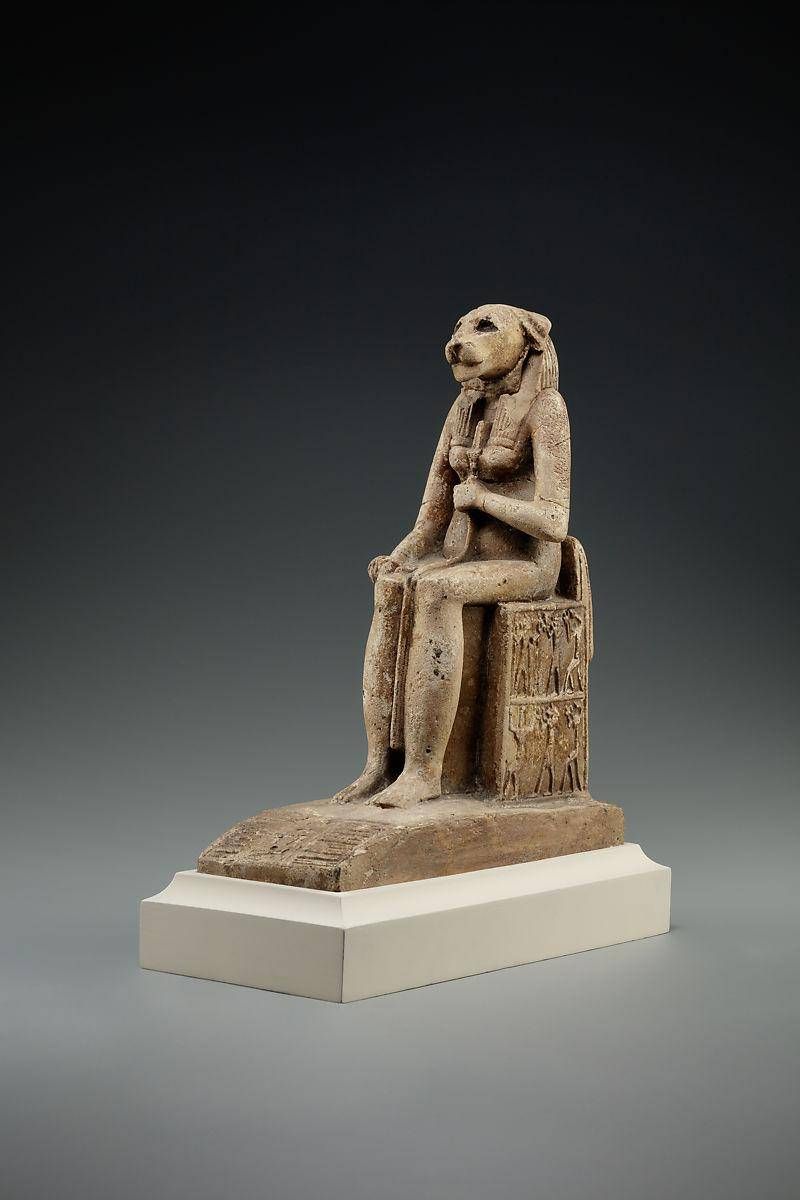
Bastet on a throne decorated with the decans
Unknown Artist
The goddess Bastet sits on a throne on top of a podium that has a slanting front. On this ramp two sets of stairs flank a smooth central area inscribed with an amuletic formula "[this is] Bastet who makes protection and life for [me]." The throne is decorated on either side with two registers of figures, including several of lion-headed or snake form, many holding wine cups.
The goddess herself is finely modeled, and has the heavy hips associated with the Third Intermediate Period. She had inlaid eyes, and against her body she holds the wekh-scepter associated with Bastet, while in her right hand she holds an ankh sign by its base.
The figures decorating the base are associated with the decans, a topic discussed in detail in a forthcoming study. In brief, the decans were originally associated with stars for time-keeping, related to units of 10 days so that there would be 36 decans for a year, with provision for the five remaining days varying. At some point the strict association with time-keeping changed, and the decans acquired an icongraphy dominated by lions and serpents.These figures begin to appear on amuletic type objects, espectially statuettes of lion-headed goddesses like this one. The imagery is conjectured to have something to do with the appeasement of the Dangerous Eye of Re goddess, since often - as here - the decan figures hold wine jars, recalling the goddess's drunkenness that forestalled the destruction of humankind.
Credit: Rogers Fund, 1944
c. 1070-664 BC
Faience
9.1 in
44.4.19
Image and text © Metropolitan Museum of Art, 2020
Where you'll find this

Permanent collection
